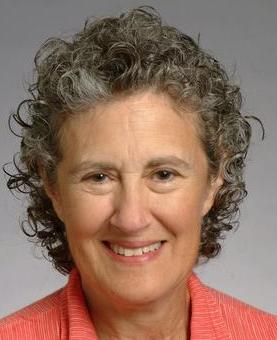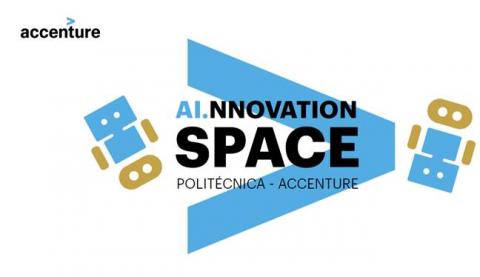A. M. Turing Award recipient and MIT Institute Professor Barbara Liskov as a distinguished speaker at ETSIINF
 On June 11 2018, we were delighted to present Prof. Barbara Liskov, one of the pioneers in the field of computer science, as a new honorary doctor of UPM. Previously, on June 8, Prof. Liskov have had been awarded an honorary doctorate by UPM, the highest honour of academic excellence, commemorating the 40th Anniversary of ETS Ingenieros Informáticos. Prof. Liskov delivered at ETSIINF Assembly Hall a conference about Multicore Programming:
On June 11 2018, we were delighted to present Prof. Barbara Liskov, one of the pioneers in the field of computer science, as a new honorary doctor of UPM. Previously, on June 8, Prof. Liskov have had been awarded an honorary doctorate by UPM, the highest honour of academic excellence, commemorating the 40th Anniversary of ETS Ingenieros Informáticos. Prof. Liskov delivered at ETSIINF Assembly Hall a conference about Multicore Programming:
Multicore computers provide large numbers of processors that all share main memory. Applications running on such computers need to use parallelism to achieve good performance, and this is difficult for applications such as databases where synchronization is needed to control concurrent access to shared data. The talk describes two projects that show how to do this. The first is a new in-memory database system called Silo that provides very high performance by being careful about cache management and concurrency control. The second is a new transaction support system called STO, which builds on the ideas from Silo to enable other transactional applications to achieve good performance through the use of transaction-aware data types.

Barbara Liskov (California, USA; November 7, 1939) earned her BA in mathematics at the University of California, Berkeley in 1961. In 1968 she became one of the first women in the United States to be awarded a computer science PhD. Her thesis on chess end-games was supervised by Prof. Dr. John McCarthy.
After receiving her PhD from Stanford University, Barbara moved to the Boston area to work at the Mitre Corporation in Bedford, MA on computer design and operating systems. Using an Interdata 3 computer that had the ability to change the instruction set via microcode, she created the “Venus Computer” tailored to supporting the construction of complex software. The Venus operating system was a small timesharing system for the Venus machine used to experiment with how different architectures helped or hindered this process. The Venus system supported 16 teletypes and each user was connected to a virtual machine so that major errors would not compromise the entire system, only the virtual machine for that user.
In 1971, shortly after finishing her experiments with Venus, Barbara left Mitre and joined the MIT faculty as a professor in the Laboratory for Computer Science. Building on her experience at the Mitre Corporation, her research has focused on creating more reliable computer systems.
At MIT she led the design and implementation of the CLU programming language, which emphasized the notions of modular programming, data abstraction, and polymorphism. These concepts are a foundation of object-oriented programming used in modern computer languages such as Java and C#.
Her MIT group also created the Argus language, which extended the ideas of CLU to ease implementation of programs distributed over a network, including support for nested transactions. An example of such a distributed program might be a network based banking system. Argus provided object abstractions called “guardians” that encapsulate related procedures. As an experimental language, Argus influenced others developers.
Liskov’s subsequent work has mainly been in the area of distributed systems, which use several computers connected by a network. Her research has covered many aspects of operating systems and computation, including important work on object-oriented database systems, garbage collection, caching, persistence, recovery, fault tolerance, security, decentralized information flow, modular upgrading of distributed systems, geographic routing, and practical Byzantine fault tolerance. Many of these, like Byzantine fault tolerance, deal with situations where a complex system fails in arbitrary ways. Liskov developed methods to allow correct operation even when some components are unreliable. With Jeannette Wing she developed a new notion of subtyping, known as the Liskov substitution principle. Her contributions have influenced advanced system developments and set a standard for clarity and usefulness.
Liskov is currently the Ford Professor of Engineering at MIT. She leads the Programming Methodology Group at MIT, with a current research focus in Byzantine fault tolerance and distributed computing. She became a full professor at MIT in 1980. She served as the Associate Head for Computer Science from 2001 to 2004, and in 2007 was appointed Associate Provost for Faculty Equity. In 2008, MIT named her an Institute Professor, the highest honor awarded to an MIT faculty member.
Honors and Awards:
Member, National Academy of Engineering (1989); Fellow, American Academy of Arts and Sciences (1992); Fellow, ACM (1996); Society of Women Engineers Achievement Award (1996); IEEE John Von Neumann medal (2004); MIT Institute Professor (2008); ACM SIGPLAN Programming Languages Lifetime Achievement Award (2008); ACM SIGSOFT Impact Paper Award (2008); ACM A. M. Turing Award (2009); CMU Katayanagi Prize for Research Excellence in Computer Science (2011); Inducted into the National Inventors Hall of Fame (2012)




